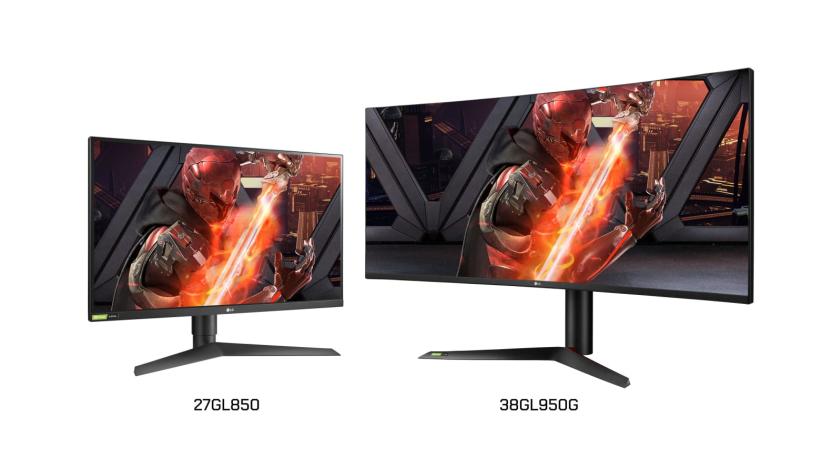nits
Latest

Analysis suggests Disney+ doesn't stream 'The Mandalorian' in true HDR
The Mandalorian has given us Baby Yoda and, by some accounts, made Disney+ worth it. The first live-action Star Wars show, The Mandalorian packs the kind of action and visual splendor that will remind you why you love Star Wars in the first place, and it stands out as truly original content on Disney's new streaming platform. But it may not be living up to its HDR promises.

LG launches the first IPS gaming displays with 1ms response time
LG has unveiled its latest gaming offering: two new monitors with a blazing one-millisecond response time. The monitors are part of LG's UltraGear family and are the first in the world to offer such a fast IPS display, which helps bring IPS (In-Plane Switching) up to a closer standard with TN (Twisted Nematic) panels.

Dolby demos new imaging tech that pushes more light to your television (eyes-on)
You may think your current HDTV is bright enough, but Dolby disagrees. The company, which is known more for its audio tech than its imaging capabilities, has been putting a lot of effort into developing a new type of imaging technology that offers up to 4,000 nits of backlight out of an LED panel. Compared to the TV standard of 100 nits, this is certainly a hefty improvement. Why is such a thing helpful? The 100-nit limit makes life difficult for filmmakers in post-production because they're not able to represent their masterpiece with perfectly accurate colors; there's only so much you can do to accurately portray the real world on such a limited budget of light. Bumping the display up to 4,000, however, allows the viewer to enjoy a much better experience. Dolby showed us a prototype of this experimental tech, which we're told will likely be exhibited at CES next month (either in prototype or in a consumer product, though this will be up to individual manufacturers). The 2K panel sat next to a production monitor that many filmmakers use as their current reference -- in other words, what they use for viewing their footage before it goes through the process of compression and other tweaks -- and the difference was night and day. Despite the fact that both monitors have the same resolution, the prototype (on the left in the above image) offered far more realistic colors, higher dynamic range and more contrast sensitivity, all of which were factors that created a fantastic viewing experience. As an example, the skies were bluer on the new monitor, and clouds that were barely noticeable on the production model actually popped out far more accurately on the prototype. We're told that the new imaging technology has already been shown off to key filmmakers in the industry, and that we'll likely see a lot more (including, we hope, an official name) on display at CES. Where it goes from there, Dolby tells us, is all up to manufacturers. And while we may see a lot more of this tech in the near future, there's no guarantee that other companies will build their monitors to the same spec (manufacturers aren't forced to go all the way up to 4,000 nits, for instance). Regardless, we'll happily take one when they start making their way into production.

Samsung RF712 gaming laptop promises ultra-bright 3D, an end to dimness (video)
Dell has already put 3D to good effect in its high-end Alienware models, but Samsung claims the screen on its new RF712 gaming laptop will have industry-leading brightness, helping it to overcome the dimming effect of wearing 3D glasses. The 17.3-inch screen will employ the same Super Bright Plus technology that stunned us in its Series 9 laptop, but this time at a higher Full HD resolution. The stated brightness is 400-nits -- as much as double what you might to expect to find in an average LCD and perhaps even enough for a LAN party outdoors in the sunshine (ok, maybe not). Other specs include a second generation quad-core Intel CPU, 2GB-worth of AMD HD6650M graphics, 750GB hard drive and USB 3.0. The RF712 will start selling in South Korea on May 2nd for ₩2.6million (about $2,400), but it could be a while before it hits international shores. Until then, we will be standing here wearing our active Bluetooth 3D glasses and looking out for a 400-nit speck on the horizon. You, on the other hand, can check out the RF712 on video after the break courtesy of Johnmichaels01.

LouseBuster kills lice, is ineffective against Slimer, Gozer
We're sure Dan Aykroyd and the gang never envisioned their symbolic ghost-busting machine being converted into a lice-evicting device, but researchers at the University of Utah are doing just that. The "chemical-free, hairdryer-like device" -- dubbed the LouseBuster -- eradicates head lice infestations on children by exterminating the eggs (or "nits"), and killing enough lice to prevent them from reproducing. While the description may make some folks queasy, Dale Clayton not only supports the head vacuum, but claims that it cured his teenagers from their own battle with lice. The rake-like comb channels air from the machine into the hair, which after several half-hour treatments makes the environment too arid for lice to survive; however, the team was quick to warn parents that hairdryers weren't an acceptable substitute for the miracle-working powers put forth by the LouseBuster. Nevertheless, Clayton hopes his spinoff company, Larada Sciences, will have the presumably Bill Murray-approved apparatus on shelves soon.[Via MedGadget]



